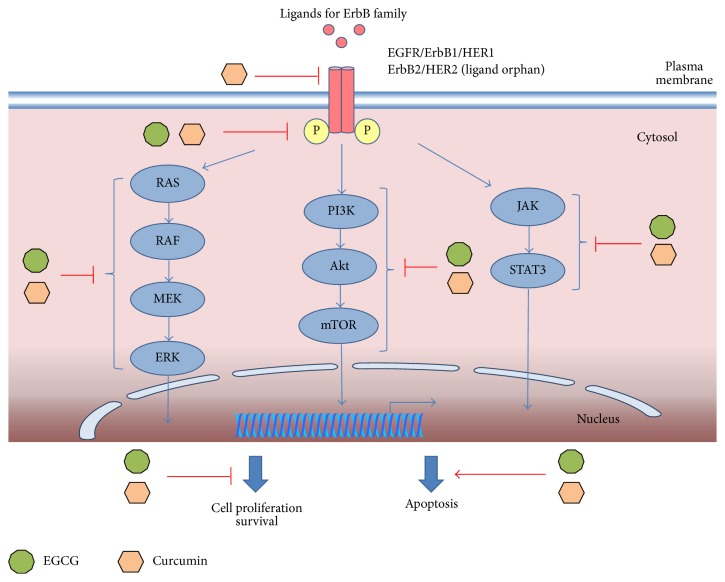Figure 2.
Schematic molecular mechanisms of EGCG and curcumin activity. EGCG was shown to inhibit cell growth in NF639 breast cancer [82], in BT-74 breast cancer, and in YCU-H891 head and neck squamous carcinoma cell lines with ErbB2 overexpression [21]; downregulate the phosphorylation of ErbB proteins in A-4311 epidermoid carcinoma cell line [83], in colon cancer cells, in head and neck squamous cancer cells [81, 84, 85], in BT-74 breast cancer, and in YCU-H891 head and neck squamous carcinoma cell lines [21]; and reduce the activity of downstream MAPK cascade [77], PI3K/Akt/mTOR pathway in pancreatic cancer cells [86, 87], and JAK/STAT3 pathway in pancreatic cancer cells with ErbB expression [88]. In cancer cells with ErbB protein expression, curcumin was able to inhibit the phosphorylation of ErbB2 in breast cancer cells [96], downregulate ErbB2 by ubiquitination in SK-BR3 breast cancer cells and COS-7 fibroblast transfected with ErbB2 [97], inhibit tumor proliferation and induce apoptosis in Ntera-2 human malignant testicular cell line [98], modulate the activity of STAT [99, 100], and inhibit the phosphorylation of Akt and MAPK in BT-474 and SK-BR-3 breast cancer cell lines [20].

